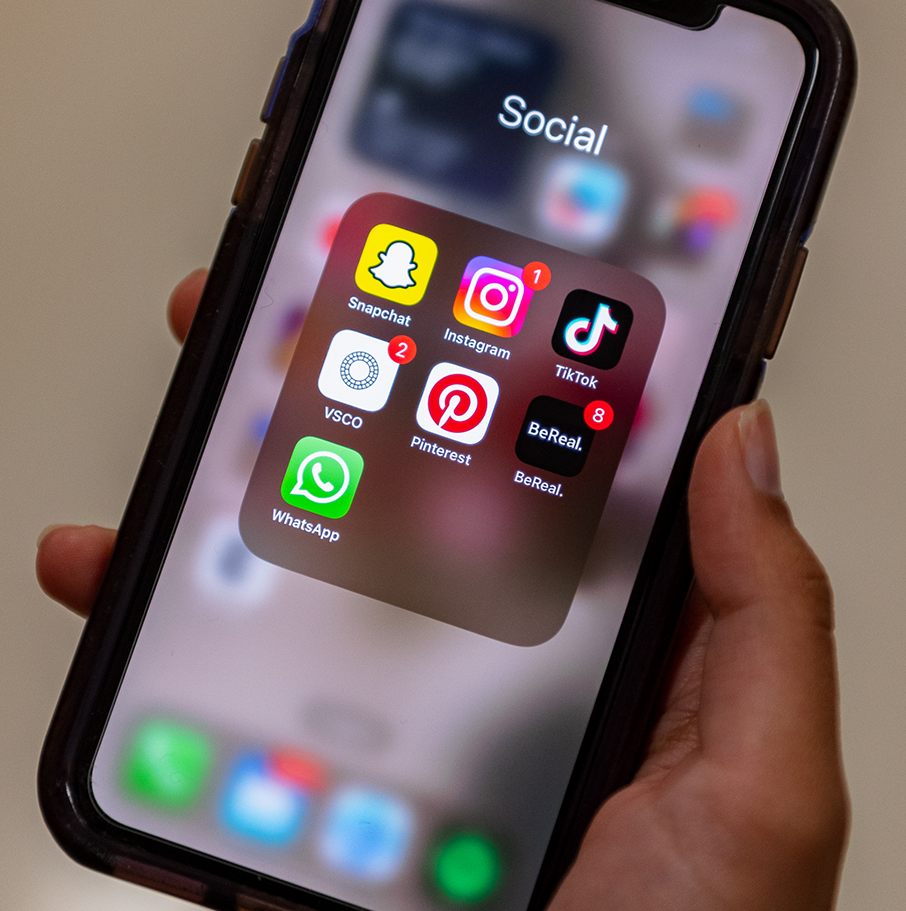In today’s digital age, it has become commonplace to hear peers decry social media as a time-wasting, harmful distraction. There are enough scientific and psychological studies certifying the negative side effects that social media has on its users — especially college students.
Because of its negative effect on mental health or the decrease in students’ attention spans and sleep quality, social media has been deemed a destructive digital tool. However, my experiences in high school and college have led me to firmly believe in the positive impact of social media, particularly when it comes to fostering a sense of community among college students.
While I do acknowledge social media’s major downsides, I am here to tell you not only the benefits it can have at Wake Forest, but also how to really use it to your advantage.
The benefits of social media
Not only can social media help students feel more seen, but it can also connect us with others who share our interests and values. When I saw my peers posting about things that aligned with my values, I reached out and tried to get to know them until we eventually met in person and became good friends. Through shared posts and interactions, connections are formed, and virtual friendships can blossom into real-life companionships. In this way, social media provides an excellent icebreaker, making it easier for students to initiate conversations and expand their social circles.
As we transition from the virtual world to face-to-face interactions on campus, social media is a helpful tool to navigate college relationships. It allows us to get to know people’s interests and personalities before meeting them in person, making the process of finding compatible friends more efficient and enjoyable. Social media functions as a filter for the people we end up befriending throughout college.
Furthermore, I have found that social media can provide some comedic relief that helps us feel connected with others. Accounts like @barstoolwakeforest make light of certain events or experiences that give us topics of conversation to lighten the mood and have another common point of interest.
How to approach using social media
These benefits can be reached if you carefully manage all of the downsides. The key to this is moderation. College can be a bewildering and isolating experience, with students often grappling with unfamiliar surroundings and daunting challenges. Social media — when approached with moderation and intention — can provide an invaluable sense of connection.
You don’t want to fall into the rabbit hole of social media as you navigate these accounts, which is why it is imperative that you limit your screen time when making these virtual connections and watching entertaining content. Extremes tend to not be good, and this 100% applies to social media. Try to become more mindful of the way you use it, so it ends up being a beneficial tool rather than a harmful and anxiety-inducing instrument. A study done by Queensland University School of Health and Rehabilitation Sciences researcher associate professor Asan Khan showed that there are some benefits, like improved social and communication skills, during the first hour of daily screen use, but detrimental effects of recreational screen use on mental wellbeing kick in after 75 to 105 minutes.
Something that helps me become more mindful of how much time I spend on social media is by following accounts that have a positive impact on me. I try to trick the algorithm, so my feed is filled with funny and good-vibes kind of content. Instead of seeing all of the toxic and draining content that keeps you hooked for hours, try to deviate from that and look for some meaningful and motivating content that will leave you feeling replenished rather than drained.
I believe in social media’s ability to promote a feeling of community among college students, despite the conventional narrative that it is harmful. There are ways to mitigate the risks and use social media in a way that positively impacts your everyday life. Social media may help students connect, share and validate their experiences, thereby improving their overall college experience when used intentionally and with mindfulness.








